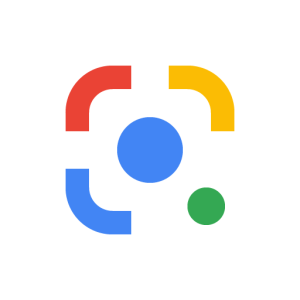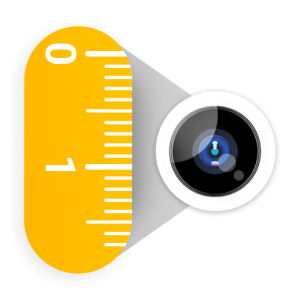
A great app will keep you glued to your device. Whether it’s lifestyle, social media, utility, gaming, productivity or news; apps are an essential part of student life.
Each month we challenge our Student Digital Champions to delve into a new category, delivering fresh perspectives and making proclamations for essential applications. Which features are dumb? What should be at the tip of your thumb?
March 2023 – Augmented Reality
Augmented reality (AR) involves overlaying visual, auditory, or other sensory information onto the real world to enhance one’s experience. Whilst most people are familiar with AR in social media filters or the Pokémon Go craze of 2016, there are plenty of practical applications available with lots more on the horizon.
Written by Hannah Harrison, Katie Stoker, Gen Kawaguchi, Rosie Neville.




Assemblr

Assemblr is an image-creation app that uses 3D and AR technology to insert objects and scenes into real life spaces. From projecting potential products into the space they would be used, to filling your room with frogs, the range of functionalities of assemblr is huge, and the app provides many useful templates and tutorials to get you started. Once you’ve finished creating a project, a QR code is generated which allows others to have the AR appear on their own devices, providing an exciting way to add interactivity to presentations or posters. The app itself is free to download, and users pay for parts and templates using virtual gold coins earnt in the app, or with real money via in-app purchases. There is also the option to collaborate with other users, and make creations public – over 700,000 public posts are already available to view.
Pros
- Free to download and first few projects are free
- Huge variety of templates available to use
- Wide range of functionalities and uses
- Easy to understand interface, with tutorials to get you started
- Option to start from scratch
- QR codes generated which allow people to interact with the AR on their own mobiles
- Can create really engaging content
- Options to make projects public or private
- Can connect, follow and collaborate with other users
Cons
- Coins based system where you buy templates and features – could result in running out of coins mid project and having to purchase more
- It can be difficult to get the sizes and dimensions of objects right without practise, which can make creations look less realistic
- QR codes can be tricky to get to work
- Very reliant on a good Wi-Fi connection
- Can be fiddly on a small device
I love how easy the app is to use, as you can just drag and drop objects straight into the environment. However, it can be difficult to guess the right sizes for objects to make scenes look realistic. After some practise though, it is really easy to bring your designs to life, and to view the creations of other users. The downside of the app is that it does rely on having a strong internet connection, and I found it could be fiddly to get things where you want them on a small phone screen, so it would probably be much more useful on a tablet or iPad. It can also be difficult to get the QR codes to work on different devices. The other drawback I found is that it is really easy to use up the initial 1000 coins provided by the app, and if you wanted to create many, or more detailed projects, there would be little choice but to purchase more. Overall, I think that Assemblr is a really handy tool to use as a one-off way to add interactivity to a quiz or presentation, and the user friendly interface makes the app a easy and fun way to learn about AR.
Reviewer: Hannah Harrison
Download links:
Google Lens
 Google Lens is an image recognition technology which can be used to collect information on the objects and text around us. The tool can be used in many different ways, some of which might be useful for you either in your everyday life, or even at University. Here are some exciting things that Google Lens can do…
Google Lens is an image recognition technology which can be used to collect information on the objects and text around us. The tool can be used in many different ways, some of which might be useful for you either in your everyday life, or even at University. Here are some exciting things that Google Lens can do…
For Android users, Google Lens might already be built into the camera app. If not, you can also easily download Google Lens from the Play Store. Alternatively, iPhone users will find Google Lens built into the official Google app. A quick download from the App Store and you can get going by clicking on the Google Lens icon.
Using Google Lens is super simple. First, point the Google Lens camera at something of interest. Depending on which app you are using, either take a photo, or Google Lens can freeze frame the image. Within only a few short moments you will receive some information about what you are looking at…
One super interesting way that Google Lens can be used for is smart text selection. This is when you can scan text through the camera then either listen to the text out loud, translate the text into another language, and even copy the text to notepad or to your computer (just make sure you are signed into the same Google account on the Chrome browser to do this). Text selection could be a handy tool at University to help with note-taking or making a copy of your notes.
Shopping around for the best product or price can be slow and time-consuming. Fortunately, Google Lens is the perfect solution to this problem. Using the shopping tab, you can scan a product or product barcode and get information on the price of the item, as well as where to buy it!
Google Lens is pretty good at recognising cafés, restaurants, museums, galleries or any other places you might want to spend your free time or study breaks. The app could therefore be a great way to find fun and exciting things to do around Bristol, especially if you’re new to the city. What’s more, Google Lens can also be used to scan the restaurant/café menu (useful if you don’t know what the dish is) or even find out a bit more information about that particular piece of art you are admiring in Bristol Museum and Art Gallery…
Google Lens is a super interesting tool which can be used in several useful ways, both at University or during your daily life. It can recognise just about anything around us, making the possibilities feel almost endless. Google are always releasing new updates too, and so the capacity of Google Lens is always growing… What do you think google lens will be able to do next?
Reviewer: Katie Stoker
Download links:
SketchAR
 SketchAR is a drawing app that helps users draw easily with Augmented Reality (AR) technology. The app projects the image onto a real-world surface using your camera, and you can create your drawings simply by tracing them. It’s really easy to use, and there are lots of tools and functions that help you create amazing art! For example, there are courses and lessons that teach you how to draw objects, such as animals, architecture, and characters. They cover a wide range of arts and difficulties, so it’s recommended for both beginners and amateurs!
SketchAR is a drawing app that helps users draw easily with Augmented Reality (AR) technology. The app projects the image onto a real-world surface using your camera, and you can create your drawings simply by tracing them. It’s really easy to use, and there are lots of tools and functions that help you create amazing art! For example, there are courses and lessons that teach you how to draw objects, such as animals, architecture, and characters. They cover a wide range of arts and difficulties, so it’s recommended for both beginners and amateurs!
There’s also a great community in SketchAR, where you can share your artwork and get comments. It’s a wonderful place to get inspiration for your next creation too, as you can browse hundreds of designs created by other users!
Pros
- Easy to draw – step-by-step AR guide
- Wide variety of drawing objects & tutorial lessons
- Even a beginner can create amazing artwork!
- Free to download
Cons
- You’ll need to pay £6.99 per week (depending on plans) after 7 days of a free trial
- Your phone camera needs to capture the whole piece of paper while drawing, which in my case I had to use a phone holder.
It’s really fun to draw using this app! Drawing steps in lessons are straightforward and well visualised, so I could create a nice picture without any frustration. You can literally draw whatever you want because there are so many types of tutorials that you can choose from (there are even calligraphy lessons!). It’s also great that the app has a time-lapse recording function, which you can review and share your drawing steps later.
However, you’ll need to be careful as there are only 7 days when you can use this app for free. You’ll be charged £6.99 per week (depending on plans) once the free trial has ended, so make sure you cancel your subscription before the renewal date if you don’t want to pay. You might also want to use a phone holder because your phone camera needs to detect the whole piece of paper while drawing.
But overall, it’s a great app! It’s super innovative 😎
Reviewer: Gen Kawaguchi
Download links:
AR ruler
 AR ruler is an app that uses augmented reality (AR) technology to tape measure the real world with your smartphone’s camera. It allows you to measure distances, angles, areas, perimeters, volume, and polylines in various units. It is fairly intuitive and easy to use – you point the camera at the place/object you want to measure and the AR technology will detect the plane, which you can start measuring.
AR ruler is an app that uses augmented reality (AR) technology to tape measure the real world with your smartphone’s camera. It allows you to measure distances, angles, areas, perimeters, volume, and polylines in various units. It is fairly intuitive and easy to use – you point the camera at the place/object you want to measure and the AR technology will detect the plane, which you can start measuring.
Pros
- Accurate measurements
- Convenience – as most people carry their smartphones with them at all times, they can quickly and easily measure objects without having to carry around a physical tape measure
- Easy to use – all you need to do is open the app and point your phone’s camera at the object/surface you want to measure, and move it along
- There is a free version
Cons
- Cost – there is a free 3-day trial of the Premium Subscription, but it costs £87.99/ Year otherwise.
- The app requires a well-lit space and detectable planes
- Requires a relatively new smartphone with a good camera – if you have an older phone or a phone with a low-quality camera, it may not work as well
- Lack of relevance/use
I feel like most people have been in a situation where they can’t find a tape measure and have resorted to unconventional measuring techniques – how many a4 sheets of paper long is an old favourite of mine. From my experience, ARuler is a more accurate alternative. However, whilst the app is well-built and accurate, I don’t think it is groundbreakingly useful for your average University student. Its most applicable use is probably checking whether a piece of furniture/ poster will fit in a particular space. The app may be more helpful for architecture, engineering, art and design students, who may do a bit more measuring.
Reviewer: Rosie Neville
Download links:
These apps aren’t supported or managed by the University of Bristol. Don’t forget to think about what data you are adding to these apps if you decide to download and use them. Our Online Identity video highlights some of the factors you may want to think about when you are online.



